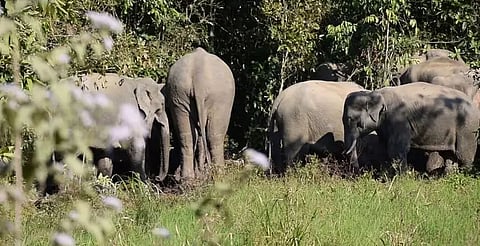
- Home
- Live Blog
- Breaking News
- Top Headlines
- Cities
- NE News
- Sentinel Media
- Sports
- Education
- Jobs

Assam government's decision to upgrade the Dehing Patkai Wildlife Sanctuary to a National Park is a welcome move towards strengthening conservation of tropical rainforests in the State. The rainforests are known to be oldest living ecosystem evolved over millions of years and sustain rich biodiversity. Chief Minister Sarbananda Sonowal has directed the officials of the Forest department to prepare the draft notification and hold public hearing to take the views of the local residents near the sanctuary.The move has come in the midst of Save Dehing Patkai campaign gaining momentum and therefore is expected to shape new articulation on the campaign. The State government has to take note that the focus of the campaign is not limited to protection of the sanctuary alone but is also on conservation of contiguous patches of the rainforests that extend to larger area notified as the Dehing Patkai Elephant Reserve.The chorus for saving the rainforests grew louder after the Standing Committee of the National Board of Wildlife (SCNBWL) granted post-facto approval on April 7 to Tikok opencast coal mining project of the North Eastern Coalfields (NECL) in Saleki proposed reserved forests inside theelephant Reserve. The NECL has temporarily suspended coal mining operations in Assam including the Tikok project inside the elephant reserve with effect from June 3. Upgrading the sanctuary to a national park is not likely to settle the debate if coal mining should be allowed inside the elephant Reserve. The elephant Reserve has total notified area of 937 sq. km. The Dehing Patkai Wildlife Sanctuary with notified area of 111.19 sq. km consists of Upper Dehing (West Block) Reserved Forest (56.69 sq. km), Dirok Reserved Forest (30.42 sq. km) in Digboi Forest Division and parts of Jeypore Reserve Forest (24.07 sq. km) in Dibrugarh Division. Apart from the flagship species -- hoolock gibbon, the only Western ape found in India, the sanctuary is one of the prime habitats of elephants, primates, and a number of critically endangered species of animals and birds. The sanctuary forms a part of the elephant reserve and, therefore, conservation of the reserve is critical to achieving the objectives of upgrading the sanctuary.
The Central government notified the elephant reserve on April 17, 2003 in pursuance of the guidelines of the Project Elephant. Conservation of rich biodiversity and rainforests of the sanctuary, even after it is upgraded,will require effective management of the eco-sensitive zone around it. The eco-sensitive zones are considered to be shockabsorbersof protected areas where certain activities are prohibited, and certain activities are regulated. Nearly 15 years after declaration of the sanctuary in 2004, the Ministry of Environment, Forests and Climate Change issued the draft notification on the Eco-sensitive Zone of the Dehing Patkai Wildlife Sanctuary on May 30, 2019. The notification acknowledges that "the protected area is having immense research recreational and educational values and it is necessary to conserve and protect the area surrounding the Wildlife Sanctuary." The area of the Eco-sensitive Zone of the sanctuary is 215.82 sq.km.Thedraft notification explains that the extent of the Eco-sensitive Zone ranges from Zero km to 7.5 km from the boundary of the wildlife sanctuary due to the presence of oil and natural gas in the immediate vicinity of the sanctuary boundary, and existence of many oil wells and drilling sites in the present and prospective drilling sites in the future. An office memorandum issued by the Ministry on August 8, 2019 states that for proposals involving developmental activity/project located outside the stipulated boundary limit of notified ESZ and located within 10 km of National Park/ Wildlife Sanctuary, prior clearance from SCNBWL may not be applicable.However, for proposals involving developmental activity/project located within 10km of National Park/Wildlife Sanctuary wherein final ESZ notificationis not notified (or) ESZ notification is in draft stage, prior clearancefrom SCNBWL is mandatory. It states that the proposals involving mining of minerals within the ESZ (or) onekilometre from the boundaries of National Parks and Sanctuaries,whichever is higher, is prohibited. The Saleki opencast coal mining project is located at a distance of 9.19 km of from the boundary of the sanctuary. If the draft notification of the Dehing Pakati eco-sensitive zone in its present form is finalised then a prior approval from the SCNBWL will not be mandatory for any opencast coal mining project or mega development project to be located outside the 7.5 km extent of the sanctuary but inside the elephant reserve. As indicated by the State Government, as of now the existing sanctuary is proposed to be upgraded to a national park. The draft ESZ notification will require careful scrutiny by all stakeholders before it is finalised. The conservation of the elephant reserve should be the guiding principle for upgrading the Dehing Patkai Wildlife Sanctuary to a National Park.